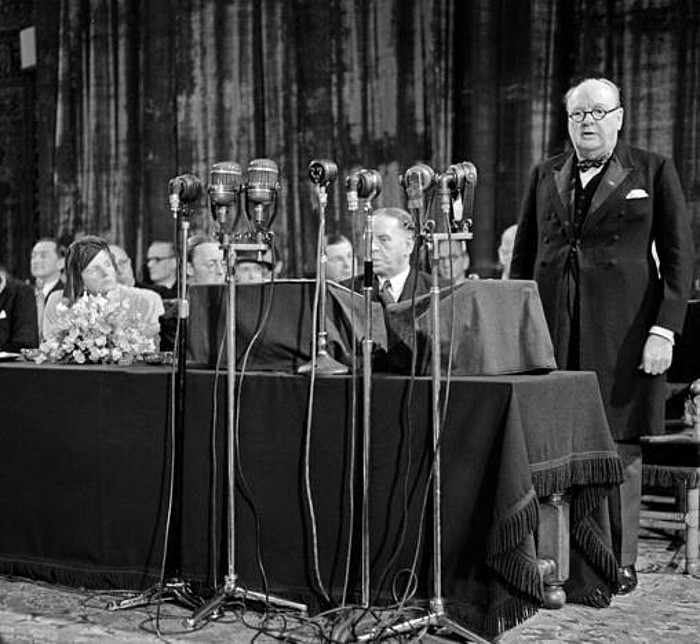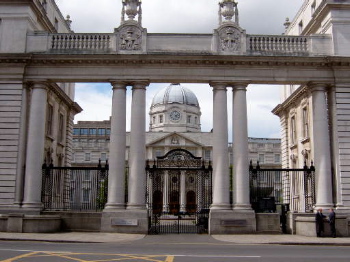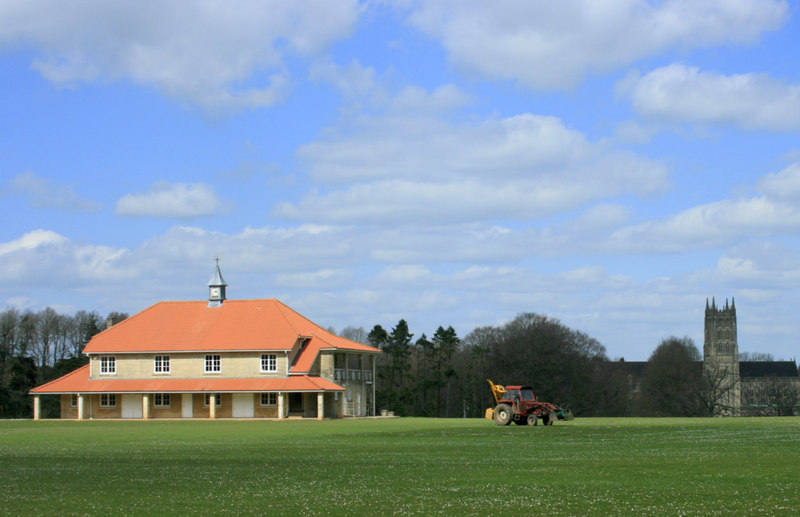|
Seán MacBride
Seán MacBride (26 January 1904 – 15 January 1988) was an Irish Republican activist, politician, and diplomat who served as Minister for External Affairs from 1948 to 1951, Leader of Clann na Poblachta from 1946 to 1965 and Chief of Staff of the IRA from 1936 to 1937. He served as a Teachta Dála (TD) from 1947 to 1957. Rising from a domestic Irish political career, he founded or participated in multiple international organisations of the 20th century, including the United Nations, the Council of Europe and Amnesty International. He received the Nobel Peace Prize in 1974, the Lenin Peace Prize for 1975–1976 and the UNESCO Silver Medal for Service in 1980. Early life MacBride was born in Paris in 1904, the son of Maud Gonne and Major John MacBride.Saturday Evening Post; 23 April 1949, Vol. 221 Issue 43, pp. 31–174, 5p As a founding member of Inghinidhe na hÉireann and Cumann na mBan, his mother was to become a prominent figure in Irish nationalist and republican c ... [...More Info...] [...Related Items...] OR: [Wikipedia] [Google] [Baidu] |
Minister For Foreign Affairs And Trade
The Minister for Foreign Affairs and Trade () is a senior minister in the Government of Ireland and leads the Department of Foreign Affairs and Trade. The Minister's office is located at Iveagh House, on St Stephen's Green in Dublin; "Iveagh House" is often used as a metonym for the department as a whole. From 1922 until 1971, the title of the office was Minister for External Affairs. The office holder is Simon Harris, TD. He is also Minister for Defence. He is assisted by: * Thomas Byrne, TD – Minister of State for European Affairs * Neale Richmond, TD – Minister of State for International Development and Diaspora Prominent ministers Over the years a number of ministers have redefined Ireland's relationship with the United Kingdom and have allowed Ireland to join and take a prominent role in organisations such as the European Union and the United Nations. These include: *Éamon de Valera – as the longest-serving Minister for External Affairs, de Valera served as P ... [...More Info...] [...Related Items...] OR: [Wikipedia] [Google] [Baidu] |
Irish People
The Irish ( or ''Na hÉireannaigh'') are an ethnic group and nation native to the island of Ireland, who share a common ancestry, history and Culture of Ireland, culture. There have been humans in Ireland for about 33,000 years, and it has been continually inhabited for more than 10,000 years (see Prehistoric Ireland). For most of Ireland's recorded history, the Irish have been primarily a Gaels, Gaelic people (see Gaelic Ireland). From the 9th century, small numbers of Vikings settled in Ireland, becoming the Norse-Gaels. Anglo-Normans also Norman invasion of Ireland, conquered parts of Ireland in the 12th century, while Kingdom of England, England's 16th/17th century Tudor conquest of Ireland, conquest and Plantations of Ireland, colonisation of Ireland brought many English people, English and Scottish Lowlands, Lowland Scottish people, Scots to parts of the island, especially the north. Today, Ireland is made up of the Republic of Ireland (officially called Republic of Irela ... [...More Info...] [...Related Items...] OR: [Wikipedia] [Google] [Baidu] |
Nobel Peace Prize
The Nobel Peace Prize (Swedish language, Swedish and ) is one of the five Nobel Prizes established by the Will and testament, will of Sweden, Swedish industrialist, inventor, and armaments manufacturer Alfred Nobel, along with the prizes in Nobel Prize in Chemistry, Chemistry, Nobel Prize in Physics, Physics, Nobel Prize in Physiology or Medicine, Physiology or Medicine, and Nobel Prize in Literature, Literature. Since March 1901, it has been awarded annually (with some exceptions) to people who have "done the most or the best work for fraternity between nations, for the abolition or reduction of standing armies and for the holding and promotion of peace congresses." ''The Oxford Dictionary of Contemporary History'' describes it as "the most prestigious prize in the world." In accordance with Nobel's will, the recipient is selected by the Norwegian Nobel Committee, a five-member committee appointed by the Parliament of Norway. The prize award ceremony is held in Oslo City Hall si ... [...More Info...] [...Related Items...] OR: [Wikipedia] [Google] [Baidu] |
Amnesty International
Amnesty International (also referred to as Amnesty or AI) is an international non-governmental organization focused on human rights, with its headquarters in the United Kingdom. The organization says that it has more than ten million members and supporters around the world. The stated mission of the organization is to campaign for "a world in which every person enjoys all of the human rights enshrined in the Universal Declaration of Human Rights and other international human rights instruments". The organization has played a notable role on human rights issues due to its frequent citation in media and by world leaders. AI was founded in London in 1961 by the lawyer Peter Benenson. In what he called "The Forgotten Prisoners" and "An Appeal for Amnesty", which appeared on the front page of the British newspaper ''The Observer'', Benenson wrote about two students who toasted to freedom in Portugal and four other people who had been jailed in other nations because of their beliefs ... [...More Info...] [...Related Items...] OR: [Wikipedia] [Google] [Baidu] |
Council Of Europe
The Council of Europe (CoE; , CdE) is an international organisation with the goal of upholding human rights, democracy and the Law in Europe, rule of law in Europe. Founded in 1949, it is Europe's oldest intergovernmental organisation, representing 46 member states from Europe, with a population of approximately 675 million ; it operates with an annual ordinary budget of approximately 500 million euros. The organisation is distinct from the European Union (EU), although people sometimes confuse the two organisations – partly because the EU has adopted the original Flag of Europe, European flag, designed for the Council of Europe in 1955, as well as the Anthem of Europe, European anthem. No country has ever joined the EU without first belonging to the Council of Europe. The Council of Europe is an official United Nations General Assembly observers, United Nations observer. Unlike the EU, the Council of Europe cannot make binding laws; however, the council has produced a numbe ... [...More Info...] [...Related Items...] OR: [Wikipedia] [Google] [Baidu] |
United Nations
The United Nations (UN) is the Earth, global intergovernmental organization established by the signing of the Charter of the United Nations, UN Charter on 26 June 1945 with the stated purpose of maintaining international peace and international security, security, to develop friendly Diplomacy, relations among State (polity), states, to promote international cooperation, and to serve as a centre for harmonizing the actions of states in achieving those goals. The United Nations headquarters is located in New York City, with several other offices located in United Nations Office at Geneva, Geneva, United Nations Office at Nairobi, Nairobi, United Nations Office at Vienna, Vienna, and The Hague. The UN comprises six principal organizations: the United Nations General Assembly, General Assembly, the United Nations Security Council, Security Council, the United Nations Economic and Social Council, Economic and Social Council, the International Court of Justice, the United Nations Se ... [...More Info...] [...Related Items...] OR: [Wikipedia] [Google] [Baidu] |
Dictionary Of Irish Biography
The ''Dictionary of Irish Biography'' (DIB) is a biographical dictionary of notable Irish people and people not born in the country who had notable careers in Ireland, including both Northern Ireland and the Republic of Ireland. History The work was supervised by a board of editors which included the historian Edith Johnston. It was published as a nine-volume set in 2009 by Cambridge University Press in collaboration with the Royal Irish Academy (RIA), and contained about 9,000 entries. The 2009 version of the dictionary was also published online via a digital subscription and was predominantly used by academics, researchers, and civil servants. An online version is now open access, having been launched on 17 March 2021 (St. Patrick's Day), and new entries are added to that version periodically. Funding is from the Higher Education Authority, Department of Foreign Affairs, and Dublin City Council Libraries. The biographies range from 200-15,000 words in length, with a ... [...More Info...] [...Related Items...] OR: [Wikipedia] [Google] [Baidu] |
University College Dublin
University College Dublin (), commonly referred to as UCD, is a public research university in Dublin, Ireland, and a collegiate university, member institution of the National University of Ireland. With 38,417 students, it is Ireland's largest university. UCD originates in a body founded in 1854, which opened as the Catholic University of Ireland on the feast of Saint Malachy, St. Malachy with John Henry Newman as its first rector; it re-formed in 1880 and chartered in its own right in 1908. The Universities Act, 1997 renamed the constituent university as the "National University of Ireland, Dublin", and a ministerial order of 1998 renamed the institution as "University College Dublin – National University of Ireland, Dublin". Originally located at St Stephen's Green and National Concert Hall, Earlsfort terrace in Dublin's city centre, all faculties later relocated to a campus at Belfield, Dublin, Belfield, six kilometres to the south of the city centre. In 1991, it purchas ... [...More Info...] [...Related Items...] OR: [Wikipedia] [Google] [Baidu] |
Downside School
Downside School (formally The College of St Gregory the Great, Downside but simply referred to as Downside) is an 11–18 mixed, Roman Catholic, independent, day and boarding school in Stratton-on-the-Fosse, Somerset, England. It was established in 1614 and is located in the Roman Catholic Diocese of Clifton. Originally a school for English Catholic boys, it was established by English and Welsh monks living in exile at Douai, France. The monastic community returned to England in 1795, with both the community and its school initially housed in the Shropshire home of Sir Edward Smythe, a former pupil. By 1814, the abbey and school had been re-established at their present site, in Somerset. Downside School became fully co-educational in all year groups in 2005. History Monks from the monastery of St Gregory's, Douai in the County of Flanders, came to Downside in 1814. In 1607, St Gregory's was the first house after the Reformation to begin convent life with a handful of exile ... [...More Info...] [...Related Items...] OR: [Wikipedia] [Google] [Baidu] |
Lycée Saint-Louis-de-Gonzague
The Lycée Saint-Louis-de-Gonzague (Franklin), founded in 1894, is a highly selective Roman Catholic, Jesuit school in the 16th arrondissement of Paris. It is regarded as the most prestigious French private school and has been ranked #1 lycée in France in the ranking of the newspaper ''Le Figaro''. History The “Petit Externat du Trocadéro” was inaugurated on September 28, 1894. The last Jesuit school established in the capital, it is the only one remaining after the closing of the colleges on Madrid and Vaugirard streets. It has enlarged little by little through real estate transactions in the immediate neighbourhood. At its inception in 1895 enrollment was 75 in classes 5 through 10. By 1898 enrollment was 220 pupils. Enrollment dropped due to the laws of 1901 but remained open without authorization. By 1920 enrollment reached 885 pupils. In 1920 an alumni association was formed. Anticlerical laws led to lawsuit payments that in 1923 almost led to the sale of Franklin. ... [...More Info...] [...Related Items...] OR: [Wikipedia] [Google] [Baidu] |
Iseult Gonne
Iseult Lucille Germaine Gonne (6 August 1894 – 22 March 1954) was the daughter of the Irish republican revolutionary Maud Gonne and the French politician and journalist Lucien Millevoye. She married the novelist Francis Stuart in 1920. Life Iseult's mother Maud Gonne had conceived a child, Georges, with her French Boulangist lover, the prominent anti Dreyfusard journalist and politician Lucien Millevoye. When the baby died, possibly by meningitis, Gonne was distraught, and buried him in a large memorial chapel built for him with money she had inherited. Gonne separated from Millevoye after Georges' death, but in late 1893, she arranged to meet him at the mausoleum in Samois-sur-Seine and, next to the coffin, they had sex. Her purpose was to conceive a baby with the same father, to whom the soul of Georges would transmigrate in metempsychosis. Iseult was born as a result on 6 August 1894. Iseult was educated at a Carmelite convent in Laval, France; when she returned to ... [...More Info...] [...Related Items...] OR: [Wikipedia] [Google] [Baidu] |
Maud Gonne
Maud Gonne MacBride (, born Edith Maud Gonne); 21 December 1866 – 27 April 1953) was an Irish republican revolutionary, suffragette and actress. She was of Anglo-Irish descent and was won over to Irish nationalism by the plight of people evicted in the Land Wars. MacBride actively agitated for Home Rule and then for the republic declared in 1916. During the 1930s, as a founding member of the Social Credit Party, she promoted the distributive programme of C. H. Douglas. Gonne was well known for being the muse and long-time love interest of Irish poet W. B. Yeats. Early life Gonne was born in England at Tongham near Aldershot, Hampshire. She was the eldest daughter of Captain Thomas Gonne (1835–1886) of the 17th Lancers and his wife, Edith Frith Gonne, born Cook (1844–1871). After her mother died while Maud was still a child, her father sent her to a boarding school in France to be educated. "The Gonnes came from County Mayo, but my great-great grandfather was disinherited ... [...More Info...] [...Related Items...] OR: [Wikipedia] [Google] [Baidu] |







